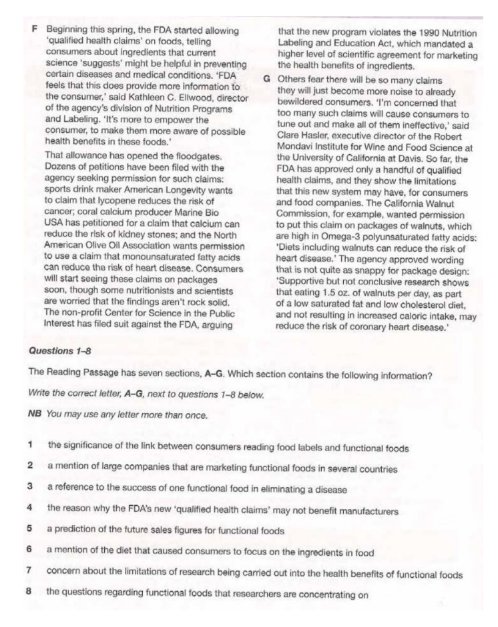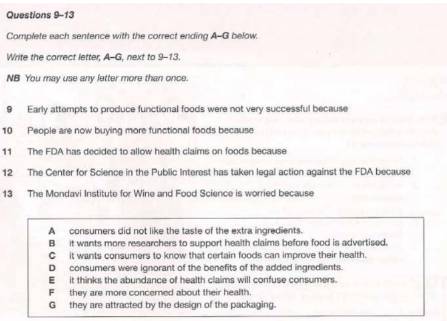Part 1. For questions 1 – 10, read the passage below and decide which answer (A, B, C, or D) best fits each space.
Throwaway lifestyle took off in the second half of the 20th century. Disposable coffee cups, plastic stirrers, and plates (1) ______________ in the bin ‘improved’ our lives. Global plastic production soared from 1.5 million tonnes in 1950 to nearly 200 million tonnes in 2002. Today, it has reached the 300 million tonne (2) ______________ . Reports of ocean garbage patches suggest that much of that plastic eventually (3) ______________ in our seas. Take a boat out far enough and you will witness bottles, toy figurines, roller balls from underarm (4) ______________ , and thousands of plastic sandals all floating around in the sea. A project called The Ocean Cleanup has been testing floating platforms for collecting bigger bits of plastic, but they cannot deal with microplastics – the technical term for tiny pieces of plastic. They are so (5) ______________ shredded by ocean currents that they are impossible to spot from a boat and are easily mistaken for food by sea creatures.
A recent study by Marcus Eriksen, one of the co-founders of 5 Gyres, the organisation that studies plastic pollution in the seas, reports that at least five trillion pieces of plastic, altogether (6) ______________ at over 268,000 tonnes, are floating around near the surface of the sea. An incredible 92% of the pieces are microplastics. According to Eriksen, we will have to live with what is already out there. “It is going to sink, it is going to get buried, it is going to (7) ______________ ,” he says. “There is no efficient means to clean up 5 km down on the ocean floor.” No one really knows (8) ______________ damage all that stranded microplastic is doing, but the hope is that once it has mixed up with the sediment, it is (9) ______________ . Yet the clouds of microplastics (10) ______________ in the water column pose a problem. The debris is easy for marine life to swallow, but the gunk that the plastics collect – such as pollutants and bacteria – is also a threat.
1) A. can be tossed B. which could toss C. having tossed D. that could be tossed
2) A. milestone B. sign C. limit D. mark
3) A. must end up B. end up C. ends up D. should be ended up
4) A. decongestants B. depressants C. antiperspirants D. antioxidants
5) A. sparsely B. leanly C. finely D. slightly
6) A. weighing out B. weighing down C. weighing up D. weighing in
7) A. fossilise B. stagnate C. accentuate D. solidify
8) A. how B. whose C. that D. what
9) A. doing more of it B. doing less of it C. making more of it D. making fewer of it
10) A. twirling B. swirling C. twisting D. swirling














